Below: 6 photos of the "Rectangles." | ||||||||
The Search For Atlantis At Bimini—Final 2010 Update By Dr. Greg Little Was the Great Bahama Bank and its islands a part of the island empire of Atlantis? Personally, I don’t know and I don’t even know for certain that Atlantis existed. But the Edgar Cayce readings relate that this vast area was the island of Poseidia and that some remains of Atlantis could be found underwater there. The readings also say that a temple (one of the three identical Hall of Records) is underwater near Bimini, buried under the “slime of ages.” None of us who have done work in this area can state definitively that anything directly relating to Atlantis has been found. But research in the last few years has found some intriguing things—things that show an unrecognized maritime culture was active there thousands of years ago. In the June 2010 issue of Alternate Perceptions a summary of the most recent underwater research at Bimini was given. This report is a follow-up to that earlier summary and will be the last such report for 2010. The Rectangles Area The “rectangles area” is a 200-foot wide swath of a flat, sandy bottom located about 4-5 miles off West Bimini. The bottom is at a 100 to 110-foot depth and an ancient shoreline is adjacent to it. This shoreline falls off rapidly to much deeper depths. Research from Florida State University has shown that this is the 10,000 B.C. shoreline—the time of Atlantis. Just above this shoreline on the flat bottom are approximately 50 square and rectangular formations ranging in sizes from 10 to 45-feet or so. They have a striking appearance because they are regular in shape (most are square or rectangular), areas of white sand are spaced between them, and they are arranged into three parallel rows on a straight line running for about 1.5 miles. Most of them have outer walls, many vertical, that are from 2 to 6-feet high. They were initially seen from the surface (on a computer screen) in an A.R.E. sponsored side-scan sonar project conducted by Bill Donato in 2006. The first actual on-site inspection was done by me, Dr. Lora Little, and Eslie Brown in scuba dives in 2009 with The History Channel. The series Mysteryquest showed brief footage of the site. On several excursions to the site since then we have obtained close-up film of the entire set of formations. They appear to be the remains of some sort of building structures and numerous images on the film show what appear to be building blocks on some of the vertical outer walls. However, nearly all of the structures are encrusted with coral. In 2010 on-site research was conducted at several of these rectangular structures. What was revealed was the presence of typical stone building blocks on the interior along with a few other objects that definitely appear to be human artifacts. However, before a definitive statement about the precise nature of these intriguing formations can be made, many more of them need to be investigated. Pino Turolla’s Columns—Definitely An Underwater Building In 2010 storms uncovered an area off South Bimini that had been thought to be nothing but a flat, sandy bottom. Eslie Brown then contacted us almost immediately because he had found that at one of the areas where sand had been cleared from the bottom, in 20-feet of water, there were long beams of rectangular stone outlining an inner area covered with hundreds of smaller square and rectangular blocks. Scattered about this inner area are what look like more beams sticking out of the bottom. The formation has a striking appearance because while sand surrounds the entire outside area. When we first saw this structure in 2010 it reminded me of a nearly forgotten report made in the 1970’s by Count Pino Turolla. Turolla worked with Dr. J. Manson Valentine and Dr. Dimitri Rebikoff almost immediately after the Bimini Road was first reported in 1968. Turolla had been snorkeling off South Bimini in 1970 when he saw an area where he reported about 30 stone columns and beams on the bottom. He was never able to refind the spot and skeptics have asserted that he either lied or confused the area with an area off North Bimini where about a dozen short stone cylinders and several fluted marble columns had previously been found. But Turolla wrote that what he had seen were stone beams at least 30-feet long. This area we think, is probably what Turolla saw before it recovered with sand. The shifting bottom sands are a continual problem there. Our 2010 visit to the site revealed that at least three of these long stone beams were between 20 to 25 feet long and that there were right angles at the outer corners. The three beams were perfectly parallel to each other. A series of investigations have now shown that these “outer beams” are quite probably the outer stonewalls of a building. It was a rectangular structure, 45-feet in length and 30 feet wide. It was divided into two rooms with one about twice the size of the other. Examination of the walls shows that they extend down at least 4-feet into sand and more sand conceals the actual extent of the vertical outer walls. All who have seen the structure agree that it is the ruins of a building. The structure’s top portion is at the same depth of the Bimini Road meaning that it would have been above the water level in 3000 B.C. and before, but what it actually is remains unknown. Granite Slabs, Stone Steps, Cut Rooms—10 Miles South of Bimini In 2010 we investigated an area about 10-miles south of Bimini where numerous flat granite slabs are located, some of which are apparently arranged in what appear to be rooms formed by cutting into the stone bottom. These are also at the 20-foot depth. We reported on seeing and filming what looked like stone steps leading down into a cut passageway. More (closer) investigation has shown that these do appear to be steps and that a multilayered stone wall runs along the back of the room-like enclosures. In addition, not too far from this area is another formation of stone that looks nearly identical to the Bimini Road. There has been no further investigation of this formation. Plans And More Updates The 2009 dvd documentary titled “The Search for Edgar Cayce’s Atlantis” will soon be updated with these finds and should be ready in early 2010 but the earlier edition remains available. The updated version will show film and photos of all of these areas. In addition, another search for the alleged underwater pyramids of Florida will be conducted soon and an expedition to Cay Sal is scheduled if weather permits. In 2011 we also hope to further our exploration of the waters off West Andros and come to definitive answers on the three areas discussed above. | ||||||||
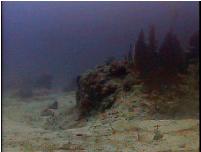 | ||||||||
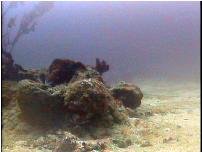 | ||||||||
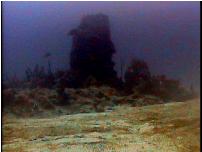 | ||||||||
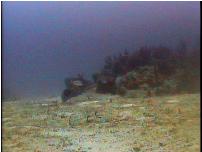 | ||||||||
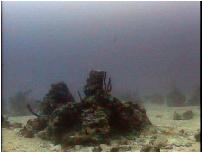 | ||||||||
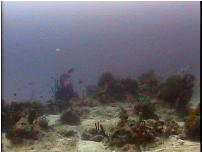 | ||||||||
Below: 8 photos of the "Columns" area. | ||||||||
 | ||||||||
 | ||||||||
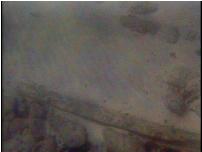 | ||||||||
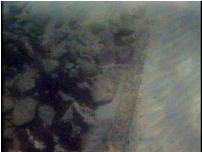 | ||||||||
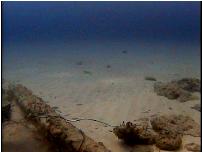 | ||||||||
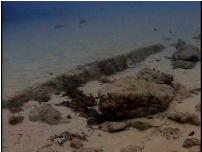 | ||||||||
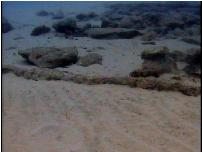 | ||
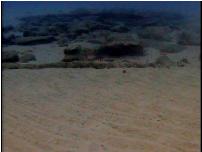 | ||
Below: 4 photos of the area called the Granite Slabs. Bottom is the steps and wall. | ||
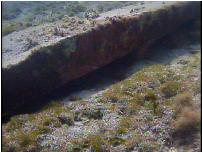 | ||
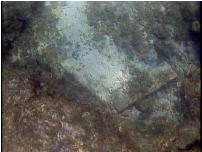 | ||
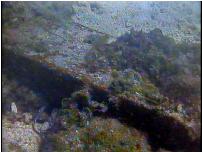 | ||
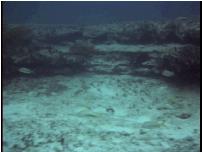 | ||